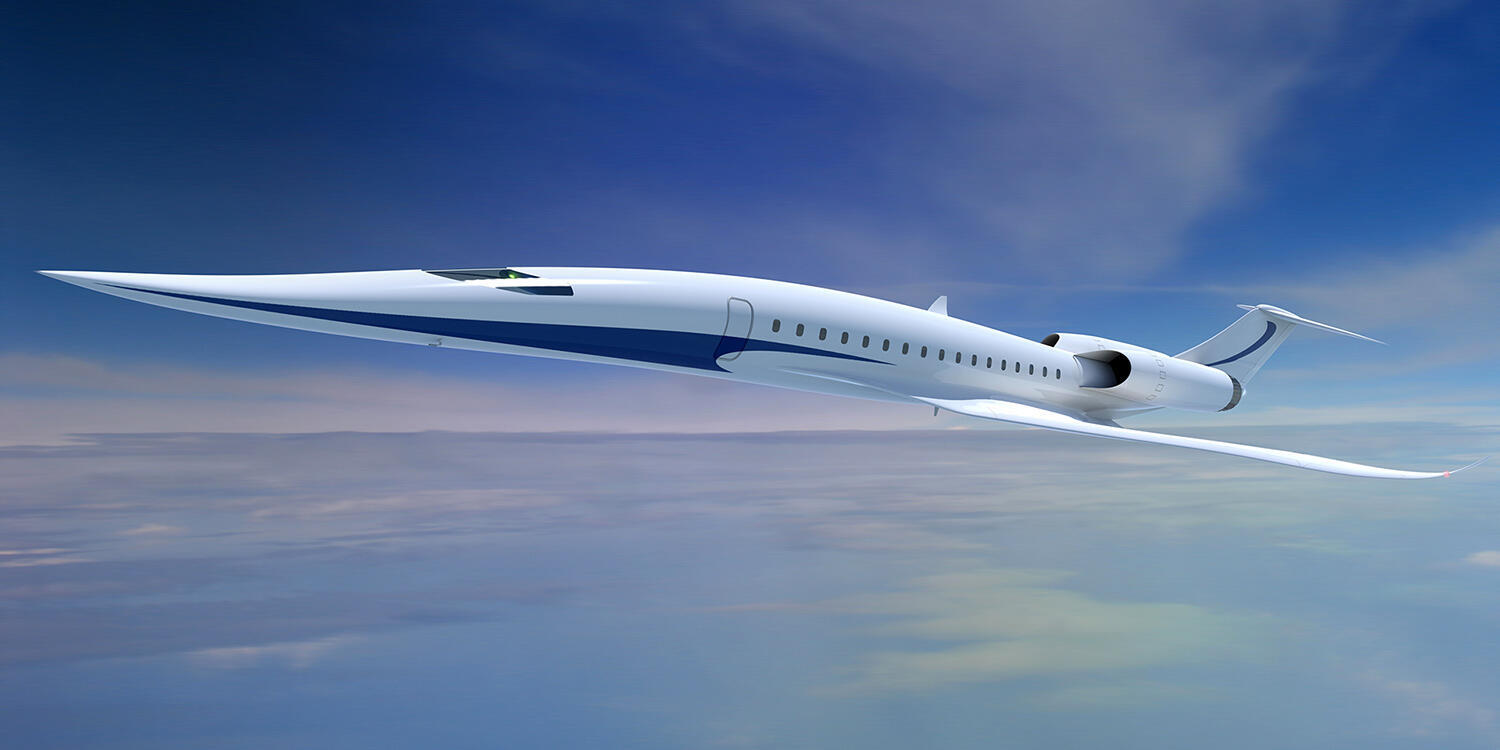
Aviation Technology Directorate

A Key Technology for Next-generation Supersonic Transport
Developing Airframe Design Technology to Reduce Sonic Booms
The Aviation Technology Directorate is engaged in a variety of R&D efforts to meet the needs of the aviation industry.
In particular, research on supersonic aircraft, which has been garnering worldwide attention, is about to reach a turning point.
MAKINO Yoshikazu and UENO Atsushi of the Aviation Technology Directorate spoke to us about the next generation of supersonic aircraft.
Challenges for next-generation supersonic aircraft
There are three elements required for next-generation supersonic passenger aircraft: lowering fuel consumption by reducing the aircraft's weight and drag, lowering noise during takeoffs and landings at airports, and lowering sonic booms to hold down noise during flight. The Aviation Technology Directorate is tackling all these challenges, and research on sonic booms in particular is moving forward to the next step.
A sonic boom is a shock wave generated when flying at supersonic speeds. The shock wave that spreads in a conical shape from the nose of the aircraft compresses the air and, when it reaches the ground, people there instantaneously hear a double thunderclap-like boom. This is why the Concorde supersonic passenger aircraft, in service until 2003, could only fly at supersonic speeds when flying over the ocean. The next generation needs a supersonic aircraft that can fly freely over land at supersonic speeds, and this will require technology to reduce sonic booms (hereinafter termed "low-boom").
"Once a low-boom supersonic aircraft using the technology currently under development by JAXA is realized, the sound will be sensorily reduced to that of a car door closing outside the house or of a knock on the door," said Unit Director MAKINO Yoshikazu.
"However, the standards of the Concorde era remain in place so, even if a low-boom supersonic aircraft is developed, it would not currently be allowed to fly over land at supersonic speeds. Discussions are underway at the International Civil Aviation Organization (ICAO) on how low the boom must be to allow overland flights, and JAXA is also taking part in these discussions."
As MAKINO says, the low-boom research that JAXA is in the process of validating may help the ICAO establish international standards. JAXA has been conducting joint research on boom reduction with NASA for more than a decade.
"We have teamed up with NASA to study what impact reducing sonic booms will have on people, and we are comparing the results of tests on subjects using measurements taken with our own sonic boom experience devices."
NASA has launched an X-59 low-boom demonstrator project, and is planning to fly the demonstrator in 2022. It will then undertake research that entails asking residents about the sonic booms generated by the demonstrator to determine what their reactions are. A new joint research project on this X-59 that includes JAXA and Boeing has been launched, and MAKINO provided us with further details.
"This joint research will verify the X-59's low-boom design using JAXA's numerical simulation and wind tunnel test technology. Sometime this fiscal year, we will be using a NASA model to perform a wind tunnel test at JAXA. This activity should also lead in future to the establishment of ICAO standards."
JAXA is thus cooperating with NASA and conducting low-boom research even as it pursues its own independent technology R&D. UENO Atsushi, Associate Senior Researcher, spoke more on this technology.
"To formulate standards for sonic booms, we need to reduce not only the sonic boom directly under the aircraft (on-track) but also the sonic boom that spreads out laterally (off-track). What we have come up to satisfy these requirements is 'integrated robust low-boom design technology'. Using this new technology will enable us to reduce the sonic booms propagating in both on-track and off-track directions."

Designing the robust low-boom airframe meant adding entirely new parts and changing the ways existing parts are used.
"We have made some changes to certain airframe parts to maintain a low-boom characteristics even when the Mach number changes during flight. For example, because engine exhaust can affect the low-boom characteristics, a new low-boom fin has been added near the engine exhaust nozzle. Thanks to this new fin, the effects of engine exhaust can be counteracted.
We have also made changes to the horizontal stabilizer used to ensure stability on conventional aircraft. With supersonic aircraft, the flow field behind the wing is greatly affected when the Mach number changes, so we have altered the angle of the horizontal stabilizer to optimize the flow field for reducing sonic boom.
However, changing these two parts alters the trim of the aircraft. To eliminate this instability, a canard like that often used on fighter aircraft was installed forward on the aircraft to ensure the aircraft's trim. The design of the concave shape on fuselage lower surface also has the effect of canceling the pressure waves generated by this canard."
The results of numerical simulations and wind tunnel tests showed that an airframe using this new technology produced a low-boom characteristics in all areas where sonic boom reaches the ground. Future plans are to conduct flight tests with a demonstrator.
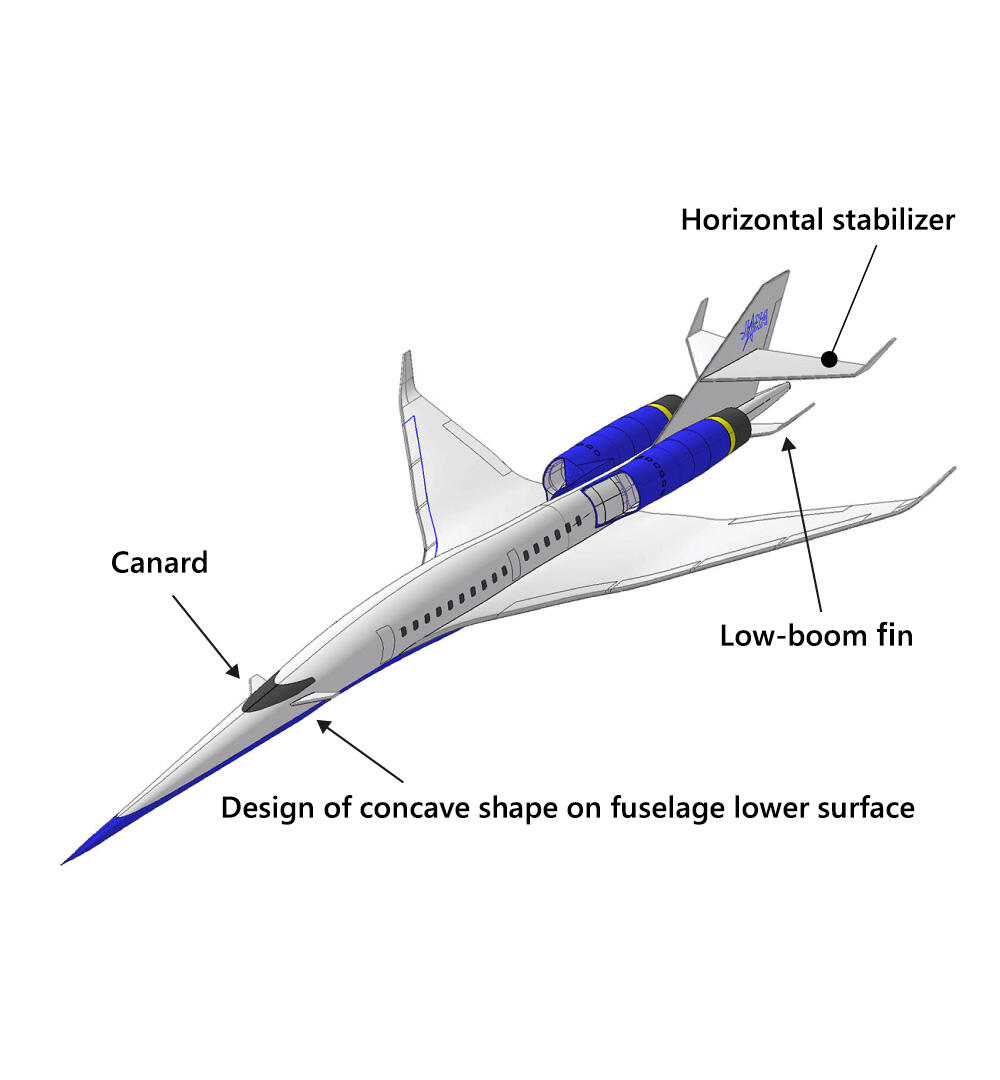
CG image of a supersonic aircraft fitted with low-boom parts
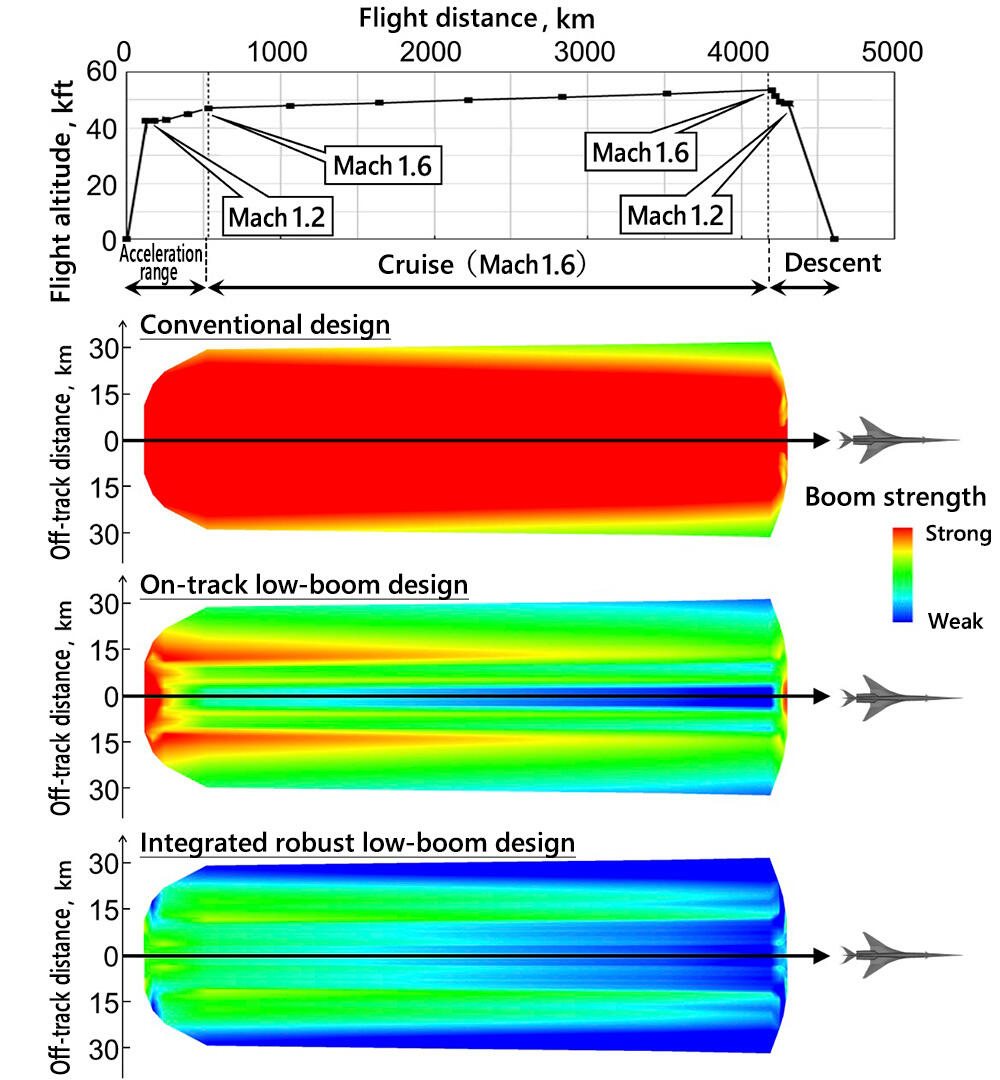
A visualization of the noise produced by a supersonic aircraft. The image for a conventional aircraft is almost entirely red, indicating a high noise level during flight at Mach 1.2 or higher when the sonic boom reaches the ground. At the bottom is the result of using the technology newly developed by JAXA, which has lowered the boom in all affected areas.
Whither collaboration in domestic supersonic technology
once supersonic passenger aircraft have been developed
In June of this year, JAXA, Japan Aircraft Development Corporation (JADC), the Society of Japanese Aerospace Companies (SJAC), Mitsubishi Heavy Industries, Ltd., Kawasaki Heavy Industries, Ltd., Subaru Corporation, and IHI Corporation concluded an agreement to collaborate in R&D on Japanese supersonic technology. This aim of this initiative is to take part in the joint international development of supersonic aircraft expected to get underway around 2030.
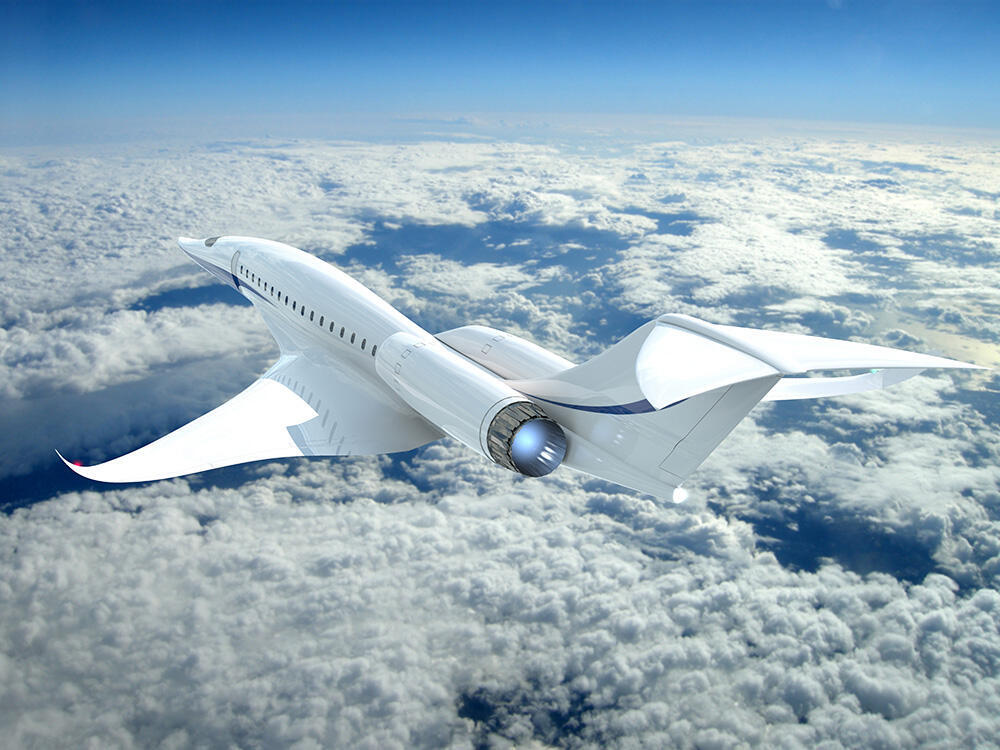
CG image of supersonic passenger aircraft
Supersonic technology is thus expected to be developed in Japan as well. What kind of future awaits us once supersonic aircraft become available?
"The supersonic aircraft we are currently envisioning can accommodate 50 passengers and fly a distance of 6,500 km. Using Tokyo as a focus, this distance covers all of Asia. We might become able to take day trips to Singapore. In future, we would like to extend the distance to be able to fly to Europe and elsewhere. Doing so will require taking onboard more fuel than the current design allows. This will inevitably mean a larger aircraft with greater drag. This is a difficult challenge, so we hope to do more research on reducing the drag", said UENO.
The Concorde was retired nearly 20 years ago. Realizing a new supersonic aircraft should attract worldwide attention. While steadily pushing ahead in developing its own technology and collaborating with various organizations and industries, JAXA will be taking the supersonic aircraft whose technology it helped to develop to the next step of flight demonstration tests.
Profile
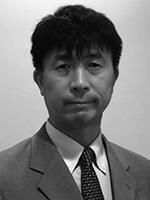
|
|
|---|

|
|
|---|
All the images are copyrighted ©JAXA unless otherwise noticed.
- Home>
- Global Activity>
- Public Relations>
- JAXA’s>
- JAXA's No.85>
- Developing Airframe Design Technology to Reduce Sonic Booms